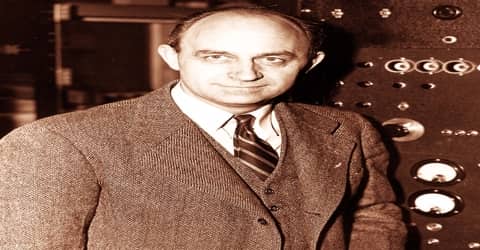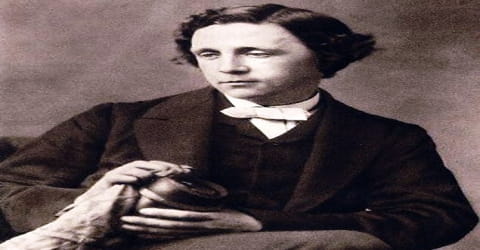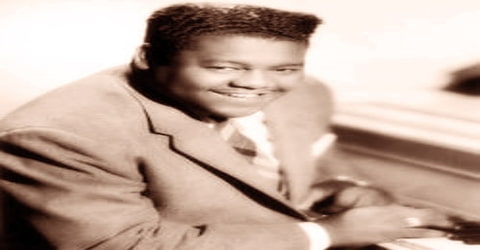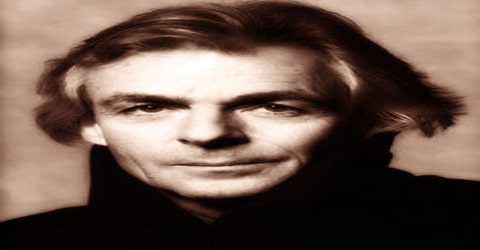Biography of Enrico Fermi
Enrico Fermi – American physicist.
Name: Enrico Fermi
Date of Birth: 29 September 1901
Place of Birth: Rome, Italy
Date of Death: 28 November 1954 (aged 53)
Place of Death: Chicago, Illinois, United States
Occupation: Physicist
Father: Alberto Fermi
Mother: Ida De Gattis
Spouse/Ex: Laura Capon Fermi (m. 1928)
Children: Giulio Fermi, Nella Fermi
Early Life
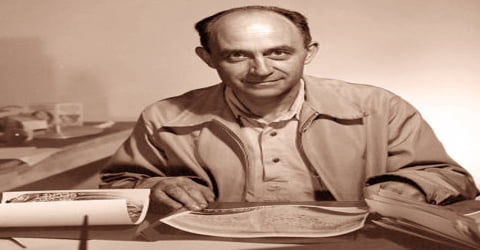
An Italian-born American scientist who was one of the chief architects of the nuclear age, Enrico Fermi was born in Rome, Italy, on 29th September 1901. He has been called the “architect of the nuclear age” and the “architect of the atomic bomb”. He was one of very few physicists to excel in both theoretical physics and experimental physics. This is an exceptional achievement in a period where scientific accomplishments have focused on one aspect or the other. He is mainly remembered for his work on the advancement of the first nuclear reactor, and for his contributions to the development of quantum theory, nuclear and particle physics, and statistical mechanics.
Fermi developed the mathematical statistics required to clarify a large class of subatomic phenomena, explored nuclear transformations caused by neutrons, and directed the first controlled chain reaction involving nuclear fission.
Even as a youngster Fermi displayed a keen interest in physics and his understanding of the subject allowed him to enter the graduate school at the University of Pisa directly when he was only 17 years old and four years later, he was awarded his doctorate. Fermi made his first major contribution to nuclear physics during the early 1930s. By this time, James Chadwick, another notable physicist, had discovered that atomic nuclei contained neutrons as well as protons. Even though there had been previous attempts to disrupt the nucleus using positively charged helium nuclei, it was Fermi who discovered neutrons with a neutral charge. Fermi and his colleagues successfully created isotopes for many known elements. He also discovered that the rate at which neutrons were injected into the nucleus played a role in the outcome.
Fermi was awarded the 1938 Nobel Prize for Physics, and the Enrico Fermi Award of the U.S. Department of Energy is given in his honor. Fermilab, the National Accelerator Laboratory, in Illinois, is named for him, as is fermium, element number 100.
Childhood, Family and Educational Life
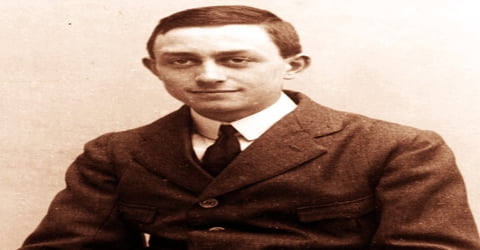
Enrico Fermi was born on 29 September 1901 as the third child of Alberto Fermi and Ida de Gattis, in Rome, Italy. His father worked as a division head in the Ministry of Railways while his mother was an elementary school teacher. He had one brother (Giulio) and one sister (Maria). He was interested in science from a young age, a passion he shared with his brother. The boys used to play with electrical toys and built electric motors together. Unfortunately, his brother died when just in his teens.
Although Fermi was baptized a Roman Catholic in accordance with his grandparents’ wishes, his family was not particularly religious; Enrico was an agnostic throughout his adult life. As a young boy, he shared the same interests as his brother Giulio, building electric motors and playing with electrical and mechanical toys. Giulio died during an operation on a throat abscess in 1915 and Maria died in an airplane crash near Milan in 1959.
Fermi received his early education from a local grammar school and at a young age developed a great interest in physics and mathematics. As a boy, he derived most of his physics knowledge from a book called ‘Elementorum physicae mathematicae’ which covered mathematics, astronomy, mechanics, and acoustics. Recognizing his interest in physics, his father’s friend gave him several books on physics and mathematics to whet his curiosity.
Fermi graduated from high school in 1918 and applied to the Scuola Normale Superiore in Pisa. The institute held a difficult entrance examination and Fermi submitted an essay on the partial differential equation which secured him the first place in the exam and quickly elevated him to the doctoral program. Initially, he had chosen mathematics as his major but later switched to physics. While studying at the institute he became friends with a fellow student called Franco Rasetti who would later collaborate with Fermi. Fermi turned out to be such a brilliant student that the director of the physics laboratory, Luigi Puccianti, asked him to organize seminars on quantum physics. He earned his doctorate degree in physics in 1922.
After receiving a doctorate in 1922, Fermi used fellowships from the Italian Ministry of Public Instruction and the Rockefeller Foundation to study in Germany under Max Born, at the University of Göttingen, and in the Netherlands under Paul Ehrenfest, at the State University of Leiden.
Personal Life
Enrico Fermi married Laura Capon, a science student at the University, on 19th July 1928. They had two children: Nella, born in January 1931, and Giulio, born in February 1936.
Career and Works
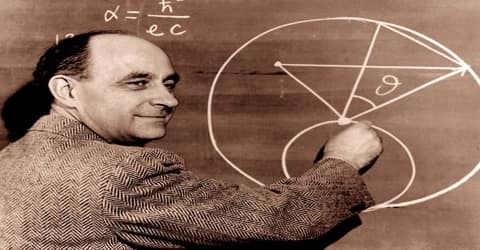
In 1918, Enrico Fermi joined the Scuola Normale Superiore in Pisa. Here he spent four years there and gained a doctor’s degree in physics in 1922, supervised by professor Puccianti. A year later he was awarded a scholarship from the Italian Government and spent a few months with renowned physicist Max Born in Göttingen. With a Rockefeller Fellowship, in 1924, he moved to Leiden in the Netherlands to work with theoretical physicist Paul Ehrenfest.
Fermi submitted his thesis, “A theorem on probability and some of its applications” (Un teorema di calcolo Delle probabilità ed alcune sue applicazioni), to the Scuola Normale Superiore in July 1922, and received his Laurea at the unusually young age of 20. The thesis was on X-ray diffraction images. Theoretical physics was not yet considered a discipline in Italy, and the only thesis that would have been accepted was one on experimental physics. For this reason, Italian physicists were slow in embracing the new ideas like relativity coming from Germany. Since Fermi was quite at home in the lab doing experimental work, this did not pose insurmountable problems for him.
Fermi returned to Italy in 1924 and was appointed as a Lecturer in Mathematical Physics and Mechanics at the University of Florence, a post he held for the next two years. He landed a position as a professor at the Sapienza University of Rome in 1927. This was a new chair created at the urging of Professor Orso Mario Corbino in an attempt to raise the standard of physics in Italy. Fermi was assisted by Corbino in building his team of budding physicists. He appointed his old friend Franco Rasetti as his assistant and they recruited talented students like Emilio Segre, Ettore Majorana, and Edoardo Amaldi. Working together, Fermi and his team conducted research on many practical and theoretical aspects of physics.
While writing the appendix for the Italian edition of the book Fundamentals of Einstein Relativity by August Kopff in 1923, Fermi was the first to point out that hidden inside the famous Einstein equation (E = mc2) was an enormous amount of nuclear potential energy to be exploited. “It does not seem possible, at least in the near future”, he wrote, “to find a way to release these dreadful amounts of energy which is all to the good because the first effect of an explosion of such a dreadful amount of energy would be to smash into smithereens the physicist who had the misfortune to find a way to do it.”
Between 1926 and 1927, Fermi and the English physicist P.A.M. Dirac independently developed new statistics, now known as Fermi-Dirac statistics, to handle the subatomic particles that obey the Pauli exclusion principle; these particles, which include electrons, protons, neutrons (not yet discovered), and other particles with half-integer spin, are now known as fermions. This was a contribution of exceptional importance to atomic and nuclear physics, particularly in this period when quantum mechanics was first being applied. This seminal work brought Fermi an invitation in 1926 to become a full professor at the University of Rome. Shortly after Fermi took up his new position in 1927, Franco Rasetti, a friend from Pisa and another superb experimentalist, joined Fermi in Rome, and they began to gather a group of talented students about them. These included Emilio Segrè, Ettore Majorana, Edoardo Amaldi, and Bruno Pontecorvo, all of whom had distinguished careers. Fermi, a charismatic, energetic, and seemingly infallible figure, clearly was the leader so much so that his colleagues called him “the Pope.”
In 1928, Fermi published ‘Introduction to Atomic Physics’ which went on to become an informative text for university students in Italy. He was completely dedicated to spreading knowledge of physics and gave several public lectures to promote this subject. Soon his fame spread around the world and foreign students started coming to Italy to study. The budding German physicist Hans Bethe was one of them.
On 18 March 1929, Fermi was appointed a member of the Royal Academy of Italy by Mussolini, and on 27 April he joined the Fascist Party. He later opposed Fascism when the 1938 racial laws were promulgated by Mussolini in order to bring Italian Fascism ideologically closer to German National Socialism. These laws threatened Laura, who was Jewish and put many of Fermi’s research assistants out of work. During their time in Rome, Fermi and his group made important contributions to many practical and theoretical aspects of physics.
During the late 1920s, quantum mechanics solved problem after problem in atomic physics. Fermi, earlier than most others, recognized that the field was becoming exhausted, however, and he deliberately changed his focus to the more primitively developed field of nuclear physics. Radioactivity had been recognized as a nuclear phenomenon for almost two decades by this time, but puzzles still abounded. In beta decay or the expulsion of a negative electron from the nucleus, energy and momentum seemed not to be conserved. Fermi made use of the neutrino, an almost undetectable particle that had been postulated a few years earlier by the Austrian-born physicist Wolfgang Pauli, to fashion a theory of beta decay in which balance was restored. This led to the recognition that beta decay was a manifestation of the weak force, one of the four known universal forces (the others being gravitation, electromagnetism, and the strong force).
Fermi also conducted public lectures and wrote popular articles for scientists and teachers in order to spread knowledge of the new physics as widely as possible. Part of his teaching method was to gather his colleagues and graduate students together at the end of the day and go over a problem, often from his own research. A sign of success was that foreign students now began to come to Italy. The most notable of these was the German physicist Hans Bethe, who came to Rome as a Rockefeller Foundation fellow and collaborated with Fermi on a 1932 paper “On the Interaction between Two Electrons” (German: Über die Wechselwirkung von Zwei Elektronen). At this time, physicists were puzzled by beta decay, in which an electron was emitted from the atomic nucleus. To satisfy the law of conservation of energy, Pauli postulated the existence of an invisible particle with no charge and little or no mass that was also emitted at the same time. Fermi took up this idea, which he developed in a tentative paper in 1933, and then a longer paper the next year that incorporated the postulated particle, which Fermi called a “neutrino”. His theory later referred to as Fermi’s interaction, and still later as the theory of the weak interaction, described one of the four fundamental forces of nature.
Fermi evolved the Beta decay theory and by 1934 had made significant contributions to this area which resulted in the discovery of slow neutrons. He emigrated to the US in 1938 primarily to escape the fascism in Italy. In the US he was offered several positions and chose to take up the post of a professor at the Columbia University where he served till 1942.
Fermi was little interested in politics, yet he grew increasingly uncomfortable with the fascist politics of his homeland. When Italy adopted the anti-Semitic policies of its ally, Nazi Germany, a crisis occurred, for Fermi’s wife, Laura, was Jewish. The award of the 1938 Nobel Prize for Physics serendipitously provided the excuse for the family to travel abroad, and the prize money helped to establish them in the United States.
When the United States entered World War II in December 1941, nuclear research was consolidated to some degree. Fermi had built a series of “piles,” as he called them, at Columbia. Now he moved to the University of Chicago, where he continued to construct piles in a space under the stands of the football field. The final structure, a flattened sphere about 7.5 meters (25 feet) in diameter, contained 380 tons of graphite blocks as the moderator and 6 tons of uranium metal and 40 tons of uranium oxide as the fuel, distributed in a careful pattern. The pile went “critical” on Dec. 2, 1942, proving that a nuclear reaction could be initiated, controlled, and stopped. Chicago Pile-1, as it was called, was the first prototype for several large nuclear reactors constructed at Hanford, Wash., where plutonium, a man-made element heavier than uranium, was produced. Plutonium also could fission and thus was another route to the atomic bomb.
Fermi became an American citizen in 1944 and was appointed a professor at the Institute of Nuclear Studies at the University of Chicago where he remained for the rest of his life. Since the war, science had been recognized in the United States as highly important to national security. Fermi largely avoided politics, but he did agree to serve on the General Advisory Committee (GAC), which counseled the five commissioners of the Atomic Energy Commission.
During the Second World War, Fermi was a key member of the Manhattan Project, working at the Los Alamos project in New Mexico on developing an atomic bomb. On July 16, 1945, the first atomic bomb was detonated at Alamogordo Air Base. In his later years, Fermi became interested in the origin of cosmic rays and investigated subatomic particles, especially pi mesons and muons.
In response to the revelation in September 1949 that the Soviet Union had detonated an atomic bomb, many Americans urged the government to try to construct a thermonuclear bomb, which can be orders of magnitude more powerful. GAC was publicly unanimous in opposing this step, mostly on technical grounds, with Fermi and Isidor Rabi going further by introducing an ethical question into so-called “objective” advice. Such a bomb, they wrote, “becomes a weapon which in practical effect is almost one of genocide…. It is necessarily an evil thing considered in any light.” U.S. Pres. Harry S. Truman decided otherwise, and a loyal Fermi went for a time back to Los Alamos to assist in the development of fusion weapons, however with the hope that they might prove impossible to construct.
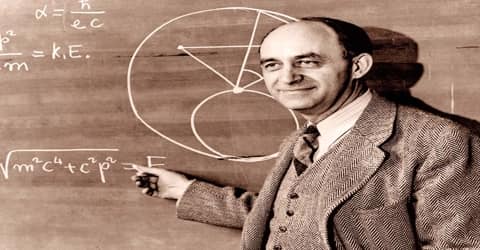
Fermi made the first predictions of pion-nucleon resonance, relying on statistical methods since he reasoned that exact answers were not required when the theory was wrong anyway. In a paper co-authored with Chen Ning Yang, he speculated that pions might actually be composite particles. The idea was elaborated by Shoichi Sakata. It has since been supplanted by the quark model, in which the pion is made up of quarks, which completed Fermi’s model, and vindicated his approach. Fermi wrote a paper “On the Origin of Cosmic Radiation” in which he proposed that cosmic rays arose through the material being accelerated by magnetic fields in interstellar space, which led to a difference of opinion with Teller. Fermi examined the issues surrounding magnetic fields in the arms of a spiral galaxy. He mused about what is now referred to as the “Fermi paradox”: the contradiction between the presumed probability of the existence of extraterrestrial life and the fact that contact has not been made.
During his later years, Fermi raised a question now known as the Fermi paradox: “Where is everybody?” He was asking why no extraterrestrial civilizations seemed to be around to be detected, despite the great size and age of the universe. He pessimistically thought that the answer might involve nuclear annihilation.
Awards and Honor
Enrico Fermi was awarded the Nobel Prize in Physics 1938 “for his demonstrations of the existence of new radioactive elements produced by neutron irradiation, and for his related discovery of nuclear reactions brought about by slow neutrons”.
The Hughes Medal was presented to him in 1942 “for his outstanding contributions to the knowledge of the electrical structure of matter, his work in quantum theory, and his experimental studies of the neutron”.
Fermi was awarded the Medal for Merit in 1946 for his contribution to the Manhattan Project. Fermi was elected a Foreign Member of the Royal Society (FRS) in 1950.
Since 1956, the United States Atomic Energy Commission has named its highest honor, the Fermi Award, after him. Recipients of the award include well-known scientists like Otto Hahn, Robert Oppenheimer, Edward Teller, and Hans Bethe.
Death and Legacy

Enrico Fermi died of stomach cancer on 28 November 1954, aged 53 and was buried in Oak Woods Cemetery in Chicago. His memorial service was held at the University of Chicago chapel, where colleagues Samuel K. Allison, Emilio Segrè, and Herbert L. Anderson spoke to mourn the loss of one of the world’s “most brilliant and productive physicists.”
Fermi is best known for his work on induced radioactivity which occurs when a previously stable material has been made radioactive by exposure to specific radiation. He supervised the first man-made self-sustaining nuclear chain reaction that was initiated in Chicago Pile -1 in December 1942. Fermi was known as an inspiring teacher and was noted for his attention to detail, simplicity, and careful preparation of his lectures. Later, his lecture notes were transcribed into books. His papers and notebooks are today at the University of Chicago.
Enrico Fermi was fond of pointing out that Alessandro Volta, working in his laboratory, could have had no idea where the study of electricity would lead. Fermi is generally remembered for his work on nuclear power and nuclear weapons, especially the creation of the first nuclear reactor, and the development of the first atomic and hydrogen bombs. His scientific work has stood the test of time. This includes his theory of beta decay, his work with non-linear systems, his discovery of the effects of slow neutrons, his study of pion-nucleon collisions, and his Fermi-Dirac statistics. His speculation that a pion was not a fundamental particle pointed the way towards the study of quarks and leptons.
Information Source:
